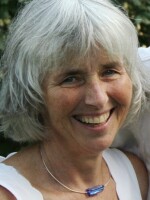Suddenly, it seems Racism is bubbling up again – this time in unusual places like the Academy Awards.
And many were surprised when the former Grand Wizard of the Ku Klux Klan announced his support for Donald Trump’s bid for the presidency.
At an Iowa high-school basketball game, white fans shouted “Trump! Trump!” at the ethnically mixed opposing team. And here in Vermont, the White Nationalist Party made robocalls with an explicitly racist message urging support for Trump.
All this reminds me of one memorable year, around twenty years ago, when several families of color moved to southern Vermont, and students of color formed a visible group for the first time at Brattleboro Union High School, where the student population had been almost exclusively white.
The demographic shift caused unease, to put it mildly. Fights broke out in the halls – not between the white students and the new arrivals, but among white social groups from various different socio-economic backgrounds. When I asked my white students about the source of the tension, they said, “Well, you know, there are new kids we don’t know...” When I asked, “You mean students of color?” the white students said, “Yeah! And they stick together.”
I pointed out that if they themselves were part of a group of six or eight white students in a school of 1200 non-white students, they might stick together, too. Things improved slowly, as more families of color moved into the Brattleboro area, and some of the students joined extracurricular activities including BUHS sports teams. But when the teams traveled farther north, to schools that were still overwhelmingly white, they endured racial remarks and at least one physical threat.
More recently, questions about racism at Brattleboro Union have centered on symbols. After years of controversy, the image of a Southern colonel was abolished as the school’s mascot, and administrators suppressed the display of the Confederate flag in school, although it’s still visible on a few of the vehicles in the student parking-lot.
And while surely there are still occasional instances of racism, high-school administrators have worked hard to support and celebrate diversity, and interracial couples and groups of friends are now taken for granted as part of the school’s social fabric.
As even Vermont, one of the most historically white states, becomes more diverse, BUHS shows that acknowledging racism and addressing it directly can go a long way toward creating a diverse community.




